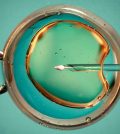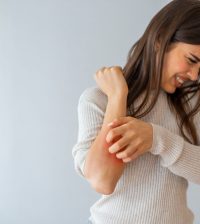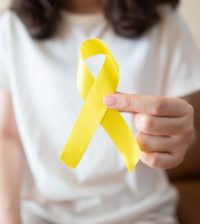- Can AI Help Make IVF More Successful?
- Gabapentin Doesn’t Increase Fall Risk, Study Suggests
- The Public Policies That Really Help Prevent Suicide
- Let’s Address Tomorrow’s Antivax Arguments Today: Pediatrics Expert
- Airport and Aircraft Noise Can Hurt Your Heart
- Sugary Drinks Are To Blame for Millions of Diabetes, Heart Disease Cases Worldwide
- Can the Mediterranean Diet Boost Your Memory?
- Morning Coffee Linked to Longer Life, Heart Health Benefits
- Diabetes Prevention Program Saves People Money, Study Shows
- Despite Previous Data, Paxlovid May Be Useful for Long Covid After All
Too Many Public Defibrillators Out of Reach When Needed

Automated external defibrillators (AEDs) placed in public spaces can save the lives of people in cardiac arrest.
However, a new Canadian study finds too many of the devices are in buildings that aren’t always open, so bystanders can’t get them when needed.
The study, “serves as a vivid reminder that 24/7/365 access to AEDs is as important as their widespread placement,” said one specialist who reviewed the findings, Dr. Howard Levite. He directs cardiology at Staten Island University Hospital in New York City.
More AEDs in public spaces, along with timely access, is imperative, he said, because “the potential to improve survival in cardiac arrest is an opportunity that cannot be ignored.”
Cardiac arrest differs from a heart attack, and occurs when the heart abruptly stops beating. According to the American College of Cardiology (ACC), over 400,000 cases of out-of-hospital cardiac arrest occur in the United States every year.
The event is often fatal, with less than a 10 percent survival rate, the ACC said. However, use of an available AED by a bystander can restart the affected person’s heart. Studies have shown that immediate use of an AED greatly boosts the likelihood of survival.
The new study was led by Dr. Timothy Chan, director of the Center for Healthcare Engineering at the University of Toronto.
His team examined more than 2,400 cases of out-of-hospital cardiac arrests that occurred in Toronto between January 2006 and August 2014.
The study found there was only a 1 in 5 chance that an AED was nearby when someone suffered cardiac arrest in a public place. And in 20 percent to 30 percent of cases where an AED was nearby, the device was inaccessible because it was in a building that was closed at the time.
Of the 767 public AED locations in Toronto, 73.5 percent were in buildings not open 24 hours a day, and 28.6 percent were in buildings closed on weekends, Chan’s team found.
Not surpringly, inaccessibility was highest during evenings, night time/early morning, and on weekends, according to the study published Aug. 15 in the Journal of the American College of Cardiology.
According to Chan, the findings show the need to consider buildings’ operating hours when deciding where to place public AEDs.
The study was conducted in Canada, but the ACC noted that in the United States, regulations about AED placement in public places varies widely by locality and state.
Levite stressed that AEDs can greatly simplify a potentially lifesaving act — automating “the tasks of arrhythmia detection, recognition and shock delivery,” to restart failing hearts.
However, “an AED that is out of reach is of no value,” he added.
Levite also noted that most cardiac arrests occur away from public spaces, often in people’s homes.
“This opens up new opportunities for AED positioning,” he said, to place them “in less-frequented outdoor spaces or in apartment buildings where retrieval within 3 minutes of need may be feasible.”
Another heart specialist agreed that when cardiac arrest occurs, time is crucial.
“The importance of rapid utilization of AEDs cannot be overemphasized,” said Dr. Joseph Germano, associate director of electrophysiology at Winthrop-University Hospital in Mineola, NY.
“Timely deployment of this lifesaving therapy requires not only possessing an AED, but easy access, a logical plan of action and staff comfortable with its use,” he added.
More information
The American Heart Association has more on cardiac arrest.
Source: HealthDay
Copyright © 2025 HealthDay. All rights reserved.










